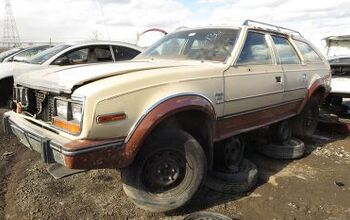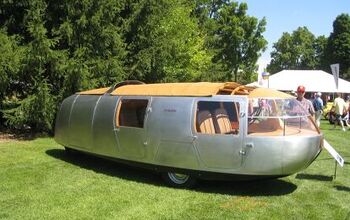Saab Was Way Ahead Of Its Time

So I’m driving along the other day and I notice a badge on the tailgate of the latest Lincoln Navigator that says “EcoBoost.”
That’s right, folks: the giant, bold, shout-out-loud Lincoln Navigator is now using an EcoBoost engine. The V-8 is gone. The big, brawny, “look at me” V-8 rumble has disappeared. Lincoln has now dropped that stuff in favor of turbocharging.
It would be one thing if it were the MKZ, which is a midsize sedan that looks sort of like a woman’s shoe turned upside down. That thing is turbocharged, and nobody really seems to care. It’s just another car, in a sea of cars, looking to eek out the best possible fuel economy.
But the Navigator! The giant, truck-like Navigator. Lincoln’s answer to the Cadillac Escalade, even though it debuted before there was a Cadillac Escalade. The huge flagship model of the Lincoln lineup; something Lincoln drivers across the world aspire to own, from airport limousine drivers to Lincoln dealership owner spouses. It’s now turbocharged.
And, of course, the Navigator isn’t the only recent luxury car to include a turbocharger. Other turbocharged luxury cars that have debuted in modern years include, well, basically all of them. Lexus, once the champion of smooth engines with low power and big displacement, now has a turbocharged NX and IS. Mercedes has all sorts of turbos. And Audi’s entire lineup might be turbocharged, for all I know. I cannot be sure of this fact because it’s impossible to spend more than 10 minutes on the Audi website without falling asleep.
It wasn’t always this way. Years ago, Mercedes brought us two types of engines: naturally aspirated engines and bigger naturally aspirated engines. Lincoln and Cadillac gave us V-8s. And Lexus offered Toyota engines that inexplicably ran on premium fuel, even when the Toyota version had no problem with regular. It was a great time.
Actually, it’s a great time now, too, because turbocharged engines are kind of fun. I especially like turbocharged engines from the mid-2000s because of how they operated. First, you put your foot down. Then, you did your taxes. Then, you were launched into a hedge somewhere in the next area code.
And this brings me to the point of today’s column, which is that Saab was way ahead of its time.
Many of you think of Saab as a fledgling Swedish automaker who had just one or two distinguishable products and could only afford to redesign its vehicles every decade or so. Of course, many of you think of Volvo in the same way. But Saab was like that, too.
But Saab’s biggest unique trait — more than its three-spoke wheels, more than its hatchback designs, more than the fact that the Saab logo faded off its emblems after three weeks of driving around in regular sunlight — was turbocharged engines.
Do you remember this? Back in the 1990s and 2000s, Mercedes-Benz and BMW and Lincoln and Cadillac and Lexus and Acura were all using big ol’ naturally-aspirated engines; the kind of engine where you’d walk up to your neighbor at a party and proudly announce your displacement like you’d share your newborn daughter’s weight at birth. My Acura has a three point five, you’d say, knowing full well your neighbor’s Lexus was only a pathetic three point oh. Or: My Cadillac has a four point nine. Or: My Mercedes has a five point six.
All of these things were acceptable to say back in the day when displacement ruled the earth.
And then there was Saab, off in the corner, somehow extracting even more power than its rivals but with far less fuel engine size. Whaddya got there, a neighbor would say, proudly stroking his new 4.0-liter, V-8-powered Lexus LS400. A two point three? And then he’d run away laughing as if his great dane had just put your entire Pomeranian in its mouth and gnawed on it a bit like a corn cob.
What he didn’t know, of course, is that your puny little two-point-three had 250 horsepower, or maybe 280, a function of Saab’s basic idea at the time that by God, there are a lot of horses running around Trollhattan, and they need to be captured and stuffed inside front-wheel drive sedans. Back then, that was considered unorthodox. Weird. Strange. Odd. “A turbocharger?” people would say. “What the hell is that?”
But now…
Well, now Saab is dead. Unfortunately, its ideas live on in virtually all modern cars: turbochargers are good. Smaller engines are great. Fuel economy is nice. Aerodynamics are fun. And as I look at today’s crop of luxurious front-wheel drive two point threes and two point ohs, and turbocharged this and EcoBoost that, I can’t help but think one thing: the only thing separating these cars from a Saab is the faded emblem.

More by Doug DeMuro
Latest Car Reviews
Read moreLatest Product Reviews
Read moreRecent Comments
- Dr.Nick What about Infiniti? Some of those cars might be interesting, whereas not much at Nissan interest me other than the Z which is probably big bucks.
- Dave Holzman My '08 Civic (stick, 159k on the clock) is my favorite car that I've ever owned. If I had to choose between the current Civic and Corolla, I'd test drive 'em (with stick), and see how they felt. But I'd be approaching this choice partial to the Civic. I would not want any sort of automatic transmission, or the turbo engine.
- Merc190 I would say Civic Si all the way if it still revved to 8300 rpm with no turbo. But nowadays I would pick the Corolla because I think they have a more clear idea on their respective models identity and mission. I also believe Toyota has a higher standard for quality.
- Dave Holzman I think we're mixing up a few things here. I won't swear to it, but I'd be damned surprised if they were putting fire retardant in the seats of any cars from the '50s, or even the '60s. I can't quite conjure up the new car smell of the '57 Chevy my parents bought on October 17th of that year... but I could do so--vividly--until the last five years or so. I loved that scent, and when I smelled it, I could see the snow on Hollis Street in Cambridge Mass, as one or the other parent got ready to drive me to nursery school, and I could remember staring up at the sky on Christmas Eve, 1957, wondering if I might see Santa Claus flying overhead in his sleigh. No, I don't think the fire retardant on the foam in the seats of 21st (and maybe late 20th) century cars has anything to do with new car smell. (That doesn't mean new car small lacked toxicity--it probably had some.)
- ToolGuy Is this a website or a podcast with homework? You want me to answer the QOTD before I listen to the podcast? Last time I worked on one of our vehicles (2010 RAV4 2.5L L4) was this past week -- replaced the right front passenger window regulator (only problem turned out to be two loose screws, but went ahead and installed the new part), replaced a bulb in the dash, finally ordered new upper dash finishers (non-OEM) because I cracked one of them ~2 years ago.Looked at the mileage (157K) and scratched my head and proactively ordered plugs, coils, PCV valve, air filter and a spare oil filter, plus a new oil filter housing (for the weirdo cartridge-type filter). Those might go in tomorrow. Is this interesting to you? It ain't that interesting to me. 😉The more intriguing part to me, is I have noticed some 'blowby' (but is it) when the oil filler cap is removed which I don't think was there before. But of course I'm old and forgetful. Is it worth doing a compression test? Leakdown test? Perhaps if a guy were already replacing the plugs...


































Comments
Join the conversation
This article said little as far as a decent point. And the fact that people would get around and talk about the displacement of their luxury cars seems highly debatable to me.
No, you wouldn't. You wouldn't mention displacement. You'd say it's a turbo. Blown. Like your wife, girlfriend won't do for you. Especially if he's a tool. That would shut him up and wipe the smile off his face. "Whaddya got there, a neighbor would say, proudly stroking his new 4.0-liter, V-8-powered Lexus LS400. A two point three? And then he’d run away laughing as if his great dane had just put your entire Pomeranian in its mouth and gnawed on it a bit like a corn cob."